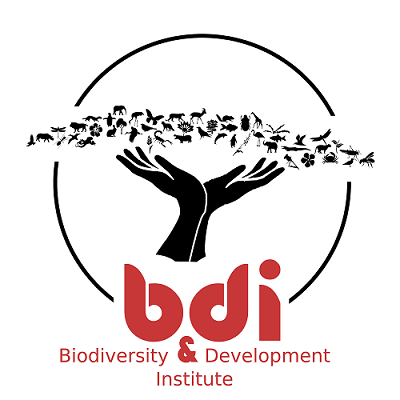View the above photo (by Wil Leurs) in OdonataMAP here.
Find the Corkscrew Hooktail in the FBIS database (Freshwater Biodiversity Information System) here.
Family Gomphidae
Paragomphus elpidius – CORKSCREW HOOKTAIL
Identification
Medium-large size
Length up to 50mm; Wingspan reaches 59mm.
An attractive, bright green and brown species. The males possess well-developed foliations on the abdomen and strongly hooked claspers.
Most similar to Paragomphus genei (Common Hooktail). The Corkscrew Hooktail has a brighter green thorax with more distinct brown markings. In addition, the foliations on the lower abdomen of P. elpidius are distinctly larger. The superior appendages are more robust and strongly hooked. The two species differ too in the colour of the pterostigmas. Paragomphus elpidius has all dark pterostigmas. Those of Paragomphus genei are pale with dark borders.
Click here for more details on identification of the Corkscrew Hooktail.

Ndumo Game Reserve, KwaZulu-Natal
Photo by Ryan Tippett

Ndumo Game Reserve, KwaZulu-Natal
Photo by Ryan Tippett
Habitat
The Corkscrew Hooktail inhabits warm savanna regions where there are large, fast-flowing rivers. Often found where there are wide gravel banks and in hot, dry valleys.

Photo by Ryan Tippett
Behaviour
Paragomphus elpidius is a shy and alert species that can be difficult to approach. Usually perches low down on rocks, sticks and plant stems close to the water. During the heat of the day they perch among trees and bushes, often above the riverbank. This species hunts from a perch. It makes swift flights to intercept prey.
Status and Conservation
A localised and scarce species. However, it can be fairly common at some sites.
Listed as of Least Concern in the IUCN Red List of Threatened Species. It is fairly sensitive to habitat degradation. The Corkscrew Hooktail prefers undisturbed sites.
Distribution
Paragomphus elpidius is found in Eastern and Southern Africa. It occurs from Uganda and Kenya in the north down to South Africa.
Below is a map showing the distribution of records for Corkscrew Hooktail in the OdonataMAP database as at February 2020.

The next map below is an imputed map, produced by an interpolation algorithm, which attempts to generate a full distribution map from the partial information in the map above. This map will be improved by the submission of records to the OdonataMAP section of the Virtual Museum.


Ultimately, we will produce a series of maps for all the odonata species in the region. The current algorithm is a new algorithm. The objective is mainly to produce “smoothed” maps that could go into a field guide for odonata. This basic version of the algorithm (as mapped above) does not make use of “explanatory variables” (e.g. altitude, terrain roughness, presence of freshwater. We will be producing maps that take these variables into account soon. Currently, it only makes use of the OdonataMAP records for the species being mapped, as well as all the other records of all other species. The basic maps are “optimistic” and will generally show ranges to be larger than what they probably are.
These maps use the data in the OdonataMAP section of the Virtual Museum, and also the database assembled by the previous JRS funded project, which was led by Professor Michael Samways and Dr KD Dijkstra.



